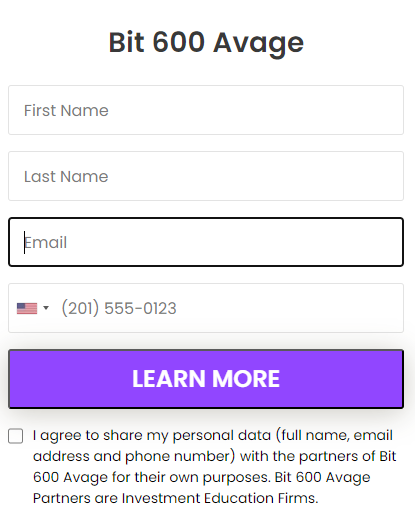The advent of digital currencies, led by Bitcoin, marked the decentralized financial systems’ genesis, rooted in blockchain principles for secure, transparent transactions. In recent years, the cryptocurrency market witnessed transformation with the security tokens’ emergence. Unlike traditional cryptocurrencies, security tokens denote ownership in real-world assets, reshaping decentralized finance. With a dual purpose, they enhance liquidity in historically illiquid markets and offer fractional ownership. Adoption yields benefits like heightened market efficiency and reduced entry barriers, reshaping decentralized finance.
Understanding Security Tokens
Definition and Characteristics
Security tokens, fundamentally distinct from conventional cryptocurrencies, derive their value from tangible assets. These assets range from real estate and artwork to equity in a company. Security tokens exhibit characteristics such as ownership rights, dividends, and voting privileges.
Differentiation from Traditional Cryptocurrencies
While traditional cryptocurrencies like Bitcoin and Ethereum are primarily speculative, security tokens offer a tangible link to real-world assets. This distinction reshapes the investor landscape, attracting those seeking exposure to physical assets within the digital realm.
Regulatory Landscape
Navigating the regulatory landscape remains a crucial aspect of security tokens. Regulatory bodies worldwide are grappling with establishing frameworks that balance investor protection and technological innovation. Compliance challenges pose hurdles but are integral to the legitimacy of security tokens.
Tokenization of Assets
Concept of Tokenization
Tokenization involves converting physical or financial assets into digital tokens on a blockchain. This process facilitates fractional ownership, enabling investors to own a share of high-value assets that were traditionally out of reach.
Industries Ripe for Tokenization
Real-world assets from industries such as real estate, art, and even intellectual property are ripe for tokenization. This unlocks liquidity in markets traditionally characterized by lengthy settlement times and high barriers to entry.
Advantages and Challenges
Tokenizing traditional assets offers advantages like increased liquidity, reduced transaction costs, and enhanced accessibility. However, challenges such as legal complexities, security concerns, and technological barriers must be addressed for widespread adoption.
The Rise of Security Token Offerings (STOs)
Overview of STOs
Security Token Offerings (STOs) have emerged as a method for fundraising that combines the benefits of traditional Initial Public Offerings (IPOs) and Initial Coin Offerings (ICOs). STOs offer a regulated and compliant way to tokenize assets and raise capital.
Comparative Analysis
Comparing STOs with ICOs and traditional IPOs highlights the advantages of transparency, fractional ownership, and regulatory compliance that STOs bring to the table. This shift represents a maturation of the cryptocurrency fundraising landscape.
Regulatory Considerations
STOs operate within a regulatory framework that ensures investor protection and market integrity. Understanding and adhering to these regulations is critical for the success and acceptance of security tokens in the broader financial landscape.
Technological Infrastructure
Blockchain Foundation
The underlying technology supporting security tokens is blockchain. Blockchain’s decentralized and immutable nature provides the security and transparency required for the issuance and trading of security tokens.
Smart Contracts
Smart contracts play a pivotal role in automating processes related to security tokens. These self-executing contracts facilitate the issuance, transfer, and management of security tokens, reducing reliance on intermediaries.
Interoperability and Standards
Ensuring interoperability and adhering to industry standards are crucial for the widespread adoption of security tokens. Establishing common standards enhances compatibility, fostering a more collaborative and interconnected ecosystem.
Market Trends and Adoption
Current Trends
Observing current trends in the security token market reveals an increasing number of projects across diverse industries. The trend signifies a growing acceptance of the potential for security tokens to reshape traditional financial practices.
Key Players
Noteworthy projects and key players are actively contributing to the development of the security token landscape. Collaboration and competition among these entities are driving innovation and shaping the future of security tokens.
Adoption Challenges
Despite the promising trajectory, challenges such as regulatory uncertainties, technological hurdles, and market skepticism hinder widespread adoption. Addressing these challenges collectively is imperative for the continued growth of the security token market.
Future Outlook
Emerging Use Cases
Security tokens are poised to find applications beyond traditional assets. Exploring new use cases, including tokenized intellectual property, royalty streams, and even digital identities, showcases the versatility and potential of security tokens.
Technological Advancements
Anticipating the future involves considering technological advancements. Improvements in blockchain scalability, privacy features, and cross-chain interoperability will contribute to a more robust and efficient security token ecosystem.
Predictions
As the security token space matures, predictions include increased regulatory clarity, wider adoption across industries, and the integration of security tokens into mainstream financial practices. The continued evolution of the ecosystem will likely lead to a more inclusive and accessible financial landscape.
Conclusion
In conclusion, the evolution of security tokens signifies a pivotal shift in the cryptocurrency landscape, acting as a bridge between digital assets and tangible real-world value. This transition from conventional cryptocurrencies to security tokens represents a significant milestone in the continual transformation of the global financial system. Moving forward, the industry must prioritize responsible adoption, adhere to regulatory frameworks, and foster collaboration among stakeholders to ensure the legitimacy and success of security tokens. Striking a balance between innovation and responsibility is crucial for the enduring viability of this transformative technology. As a call to action, the transformative potential of security tokens encourages active engagement from industry participants, investors, and regulators in shaping the future of decentralized finance. Embracing both the opportunities and challenges presented by security tokens will contribute to the establishment of a more inclusive and efficient financial ecosystem.








